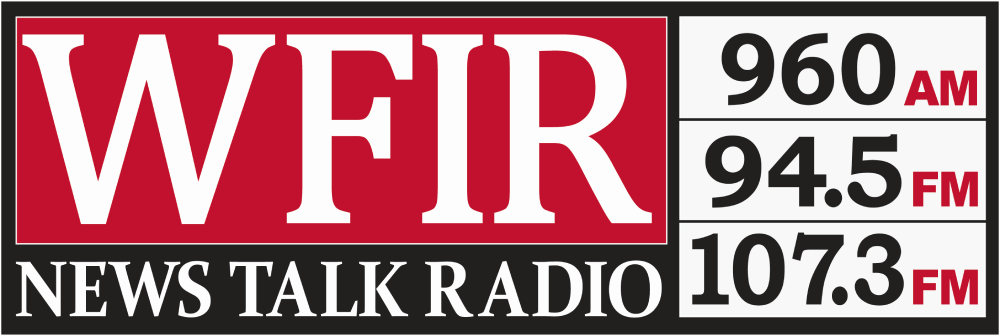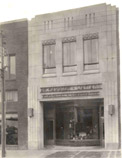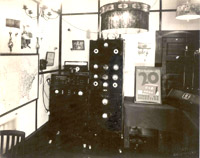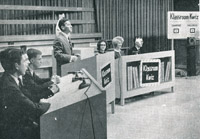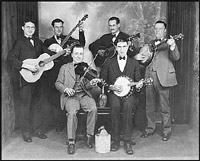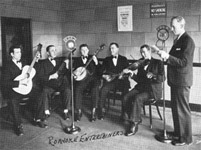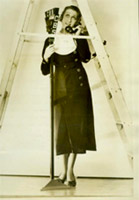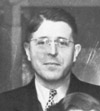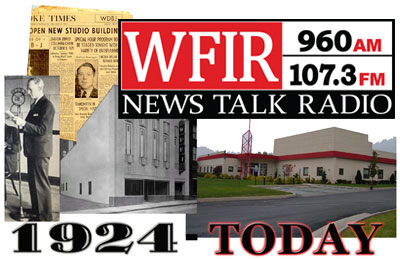
The Mic is On (1924 – 1931)
WFIR is the second-oldest radio station in Virginia and one of the oldest commercial radio stations in the country. The station you listen to now for Roanoke Valley news, weather, and talk shows began long ago as the radio hobby of Mr. Frank E. Maddox.
Maddox built and operated amateur station “3BIY” until his employer, the Richardson- Wayland Electrical Corporation, convinced him in 1924 to build a commercial station.
Richardson-Wayland sold radios and parts, and management knew they could sell more radios if people simply had something to listen to. Roanokers could hear nothing at all during the day and could pick up only sporadic signals at night.
|
|
|
The 5’ x 4’ transmitter for Roanoke’s new 20 watt blowtorch (many modern stations broadcast at 50,000 watts!) went in the back of Richardson-Wayland’s shop at 106 West Church Avenue next to the current Texas Tavern. Mr. Richardson converted his office into an impromptu studio.
Thus was born the radio station initially known as WDBJ.
The first musician to go on the air on WDBJ’s assigned frequency at 1310 AM was Raymond Jordan. On June 20, 1924, a banjo player accompanied Jordan on the fiddle for several selections:“Soldier’s Joy,” “Turkey in the Straw,” and “Darling Nellie Gray.” Seven miles away, near present-day Lewis-Gale Clinic, a group of the station’s promoters gathered in the parlor of S. H. McVitty. McVitty owned one of the few factory-built receiving sets in the area and the broadcast reportedly came in loud and clear!
|
|
A 15-year-old Vinton High School dropout by the name of Hayden Huddleston assisted Maddox in those early days. Huddleston, the “Red-Headed Announcer,” eventually became Roanoke’s first radio and TV superstar. He worked in broadcasting for 60 years, including as host of The Hayden Huddleston Show and Klub Kwiz. The latter aired for an amazing 19 years and is perhaps Roanoke’s most successful show. |
| Most anyone else who heard WDBJ in these heady days listened on homemade radios that Maddox and Huddleston built themselves. Even with their homemade sets, listeners didn’t get to hear very much. Jordan says, “We were on the air for maybe two hours, three days a week,” and never according to a regular schedule. |
|
Poor Mr. Richardson eventually got his office back when he arranged to create a real studio for WDBJ in the music department of the Thurman and Boone Company where the Heironimous building is located now. Heavy rugs covered the walls and ceiling.
Not long after that, WDBJ abandoned the Thurman and Boone room in favor of a second floor studio of the Grand Piano Company on Campbell Avenue. And during the winter of 1926-1927, WDBJ moved into its first modern, specially constructed studios in the American Theater Building located at Jefferson Street and Campbell Avenue.
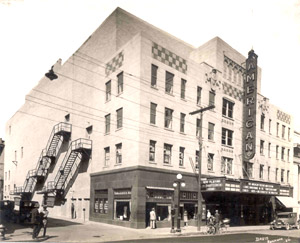
In February 1929, engineers modernized the transmitter and moved it to the top of the Shenandoah Life Insurance building. WDBJ was broadcasting now on 930 AM and technicians increased power to 500 watts during the day. The station upgraded its power three more times…to 1,000 watts in 1934, up to 5,000 watts in 1936 and to 10,000 watts during the day and 5,000 watts at night in 2014.
|
|
Some of the earliest regular performers in those days were the Thursday Morning Music Club, the Roanoke Entertainers, the N&W String Band, the McCray Family, and the Roanoke Jug Band. At times the “entertainment” was home grown pickin’ and grinnin’ not too much more orchestrated than that first broadcast. Listeners could also tune in to hear poetry, storytelling, or a lecture on the evils of alcohol. |
|
Significantly, WDBJ joined the Columbia Broadcasting System on October 8, 1929. CBS gave the station access to an extraordinary wealth of syndicated music, drama, serials, and news that had never been heard in Roanoke |
|
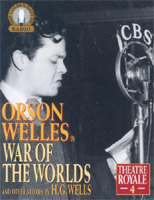 |
WDBJ managers realized the influence of radio was growing after the terrified response to Orson Welles’ “War of the Worlds.” |
| That first musician to inaugurate WDBJ, Raymond Jordan, helped oversee this momentous explosion of programming. Jordan, the unlikely fiddle player who began his early employed life as a storekeeper with Norfolk and Western and as a teacher at Lee Junior High School, became WDBJ’s station manager in 1930. He eventually became one of the founding fathers of the Virginia Association of Broadcasters! |
|
